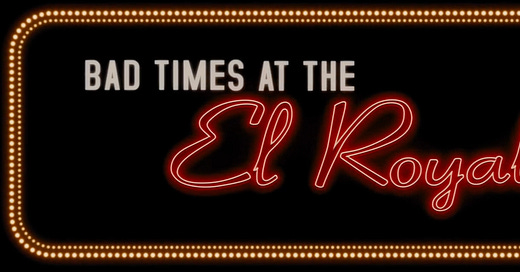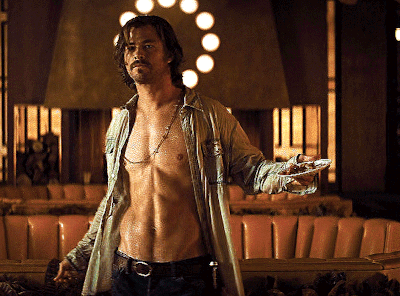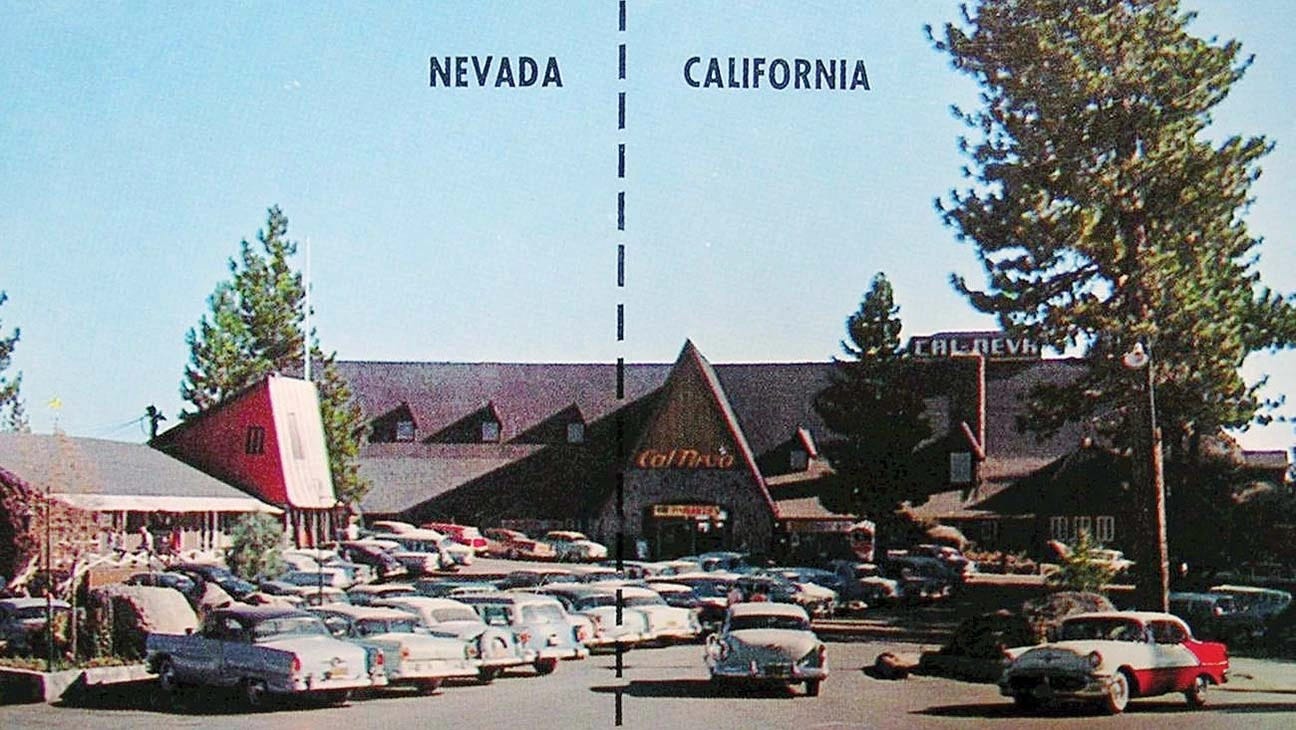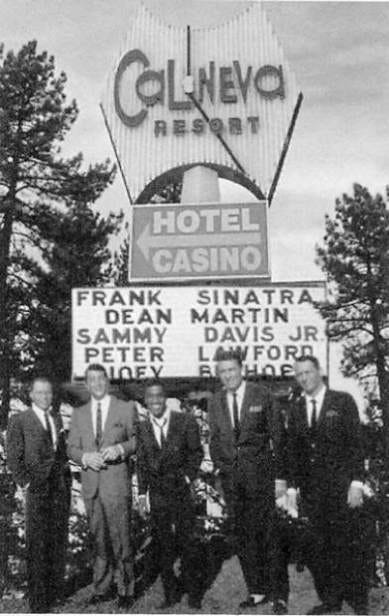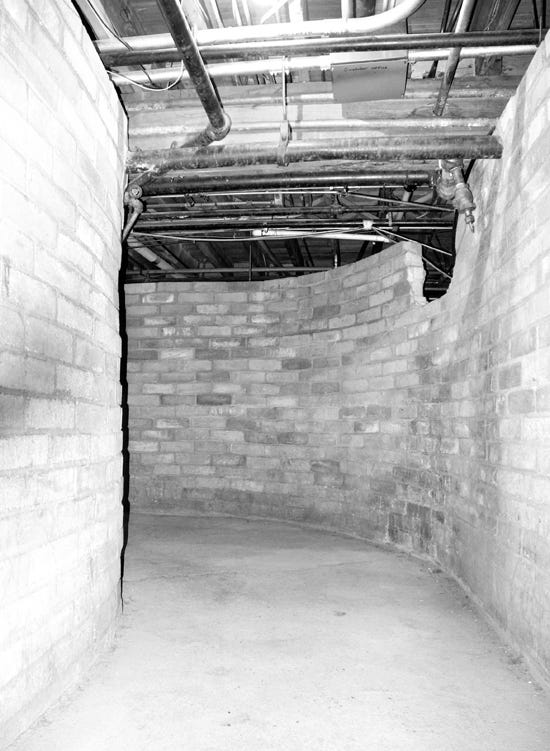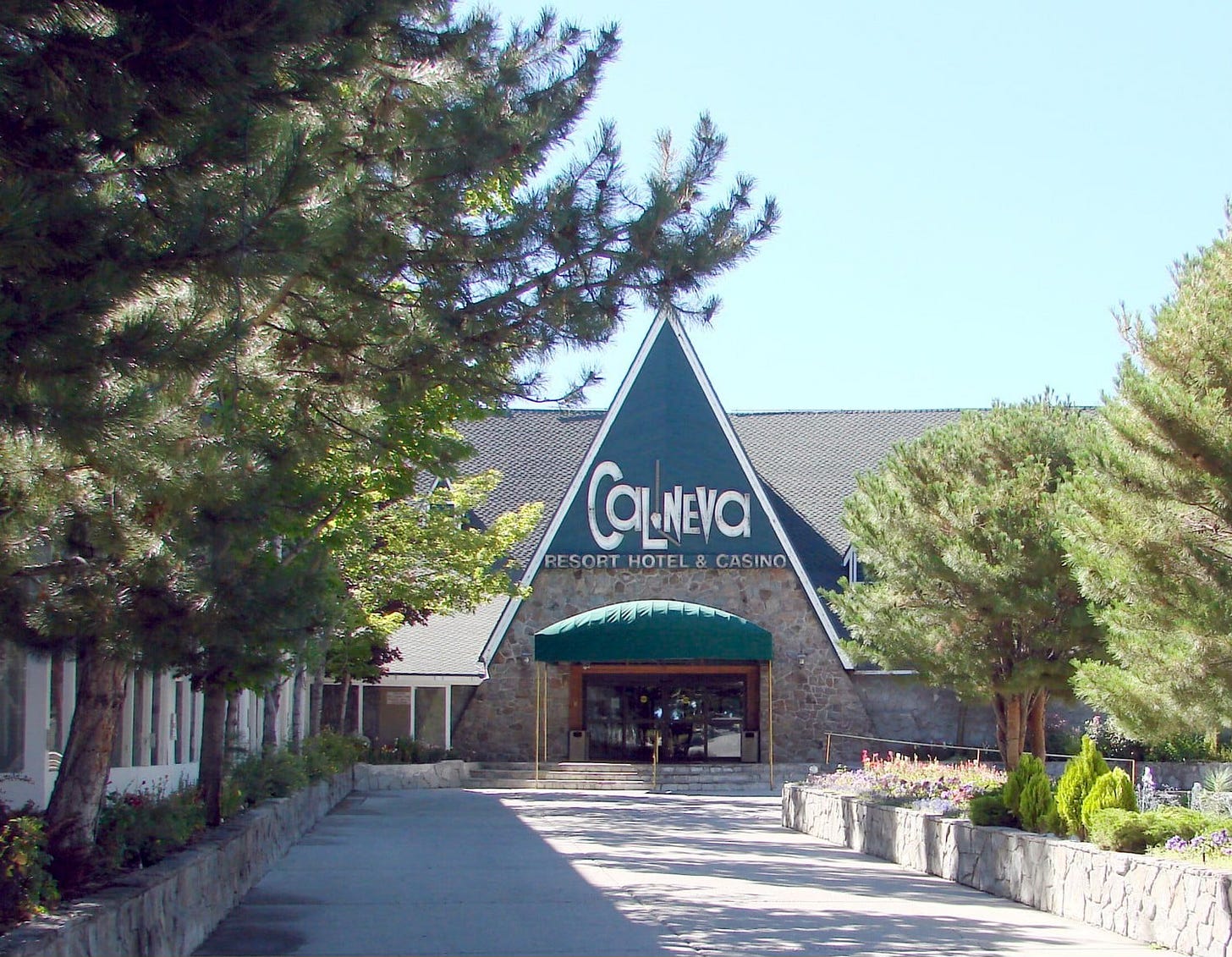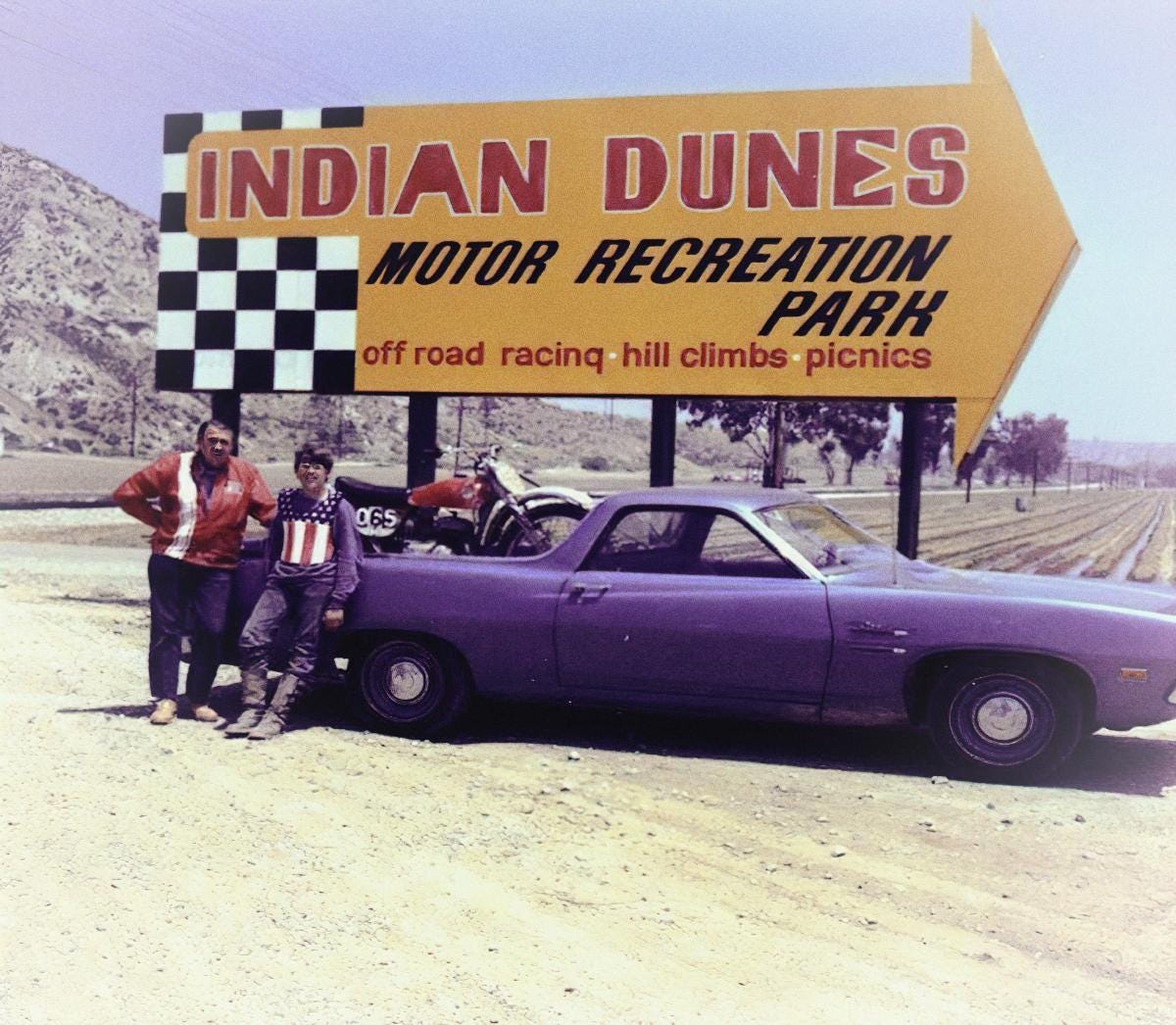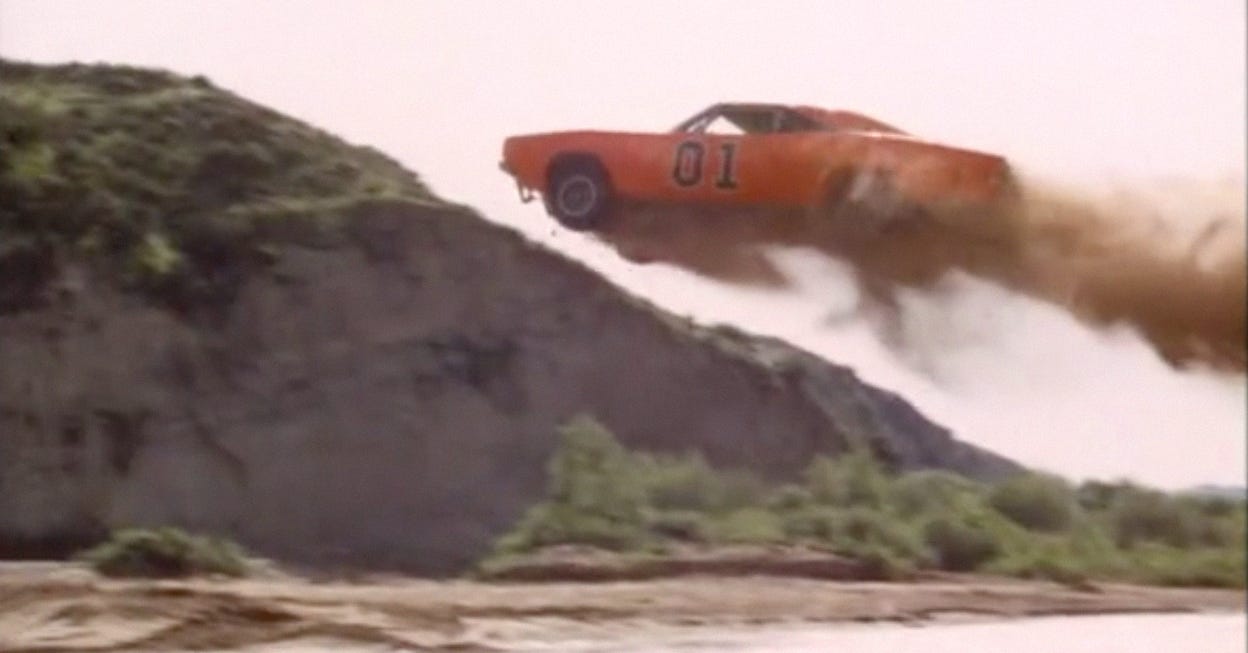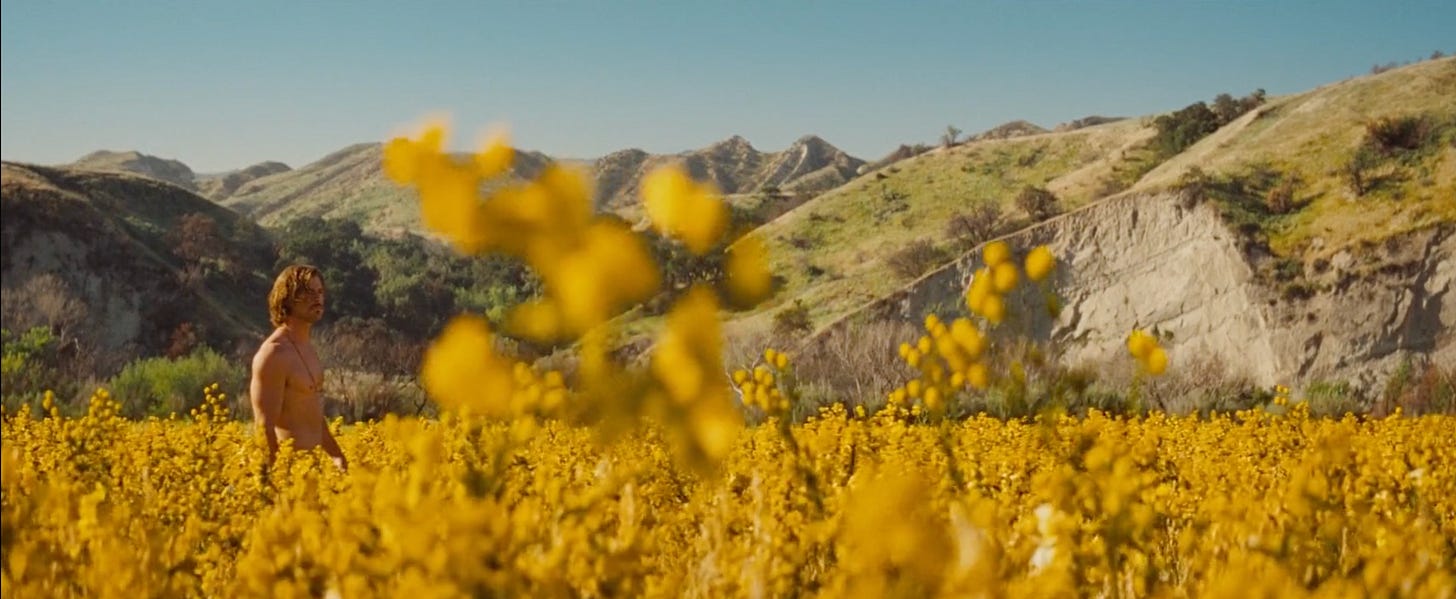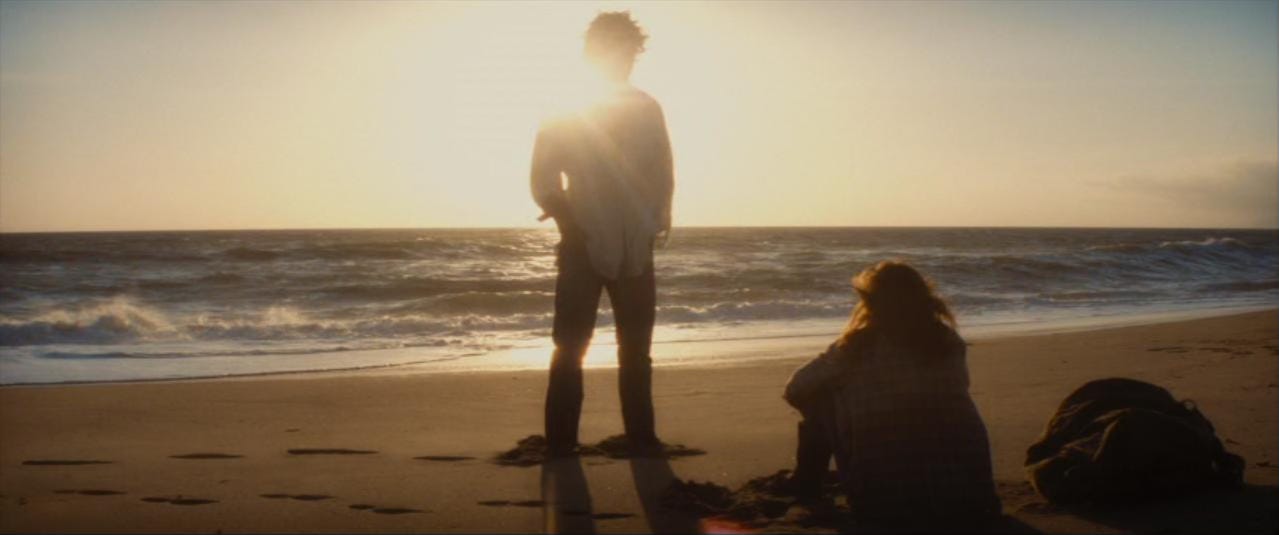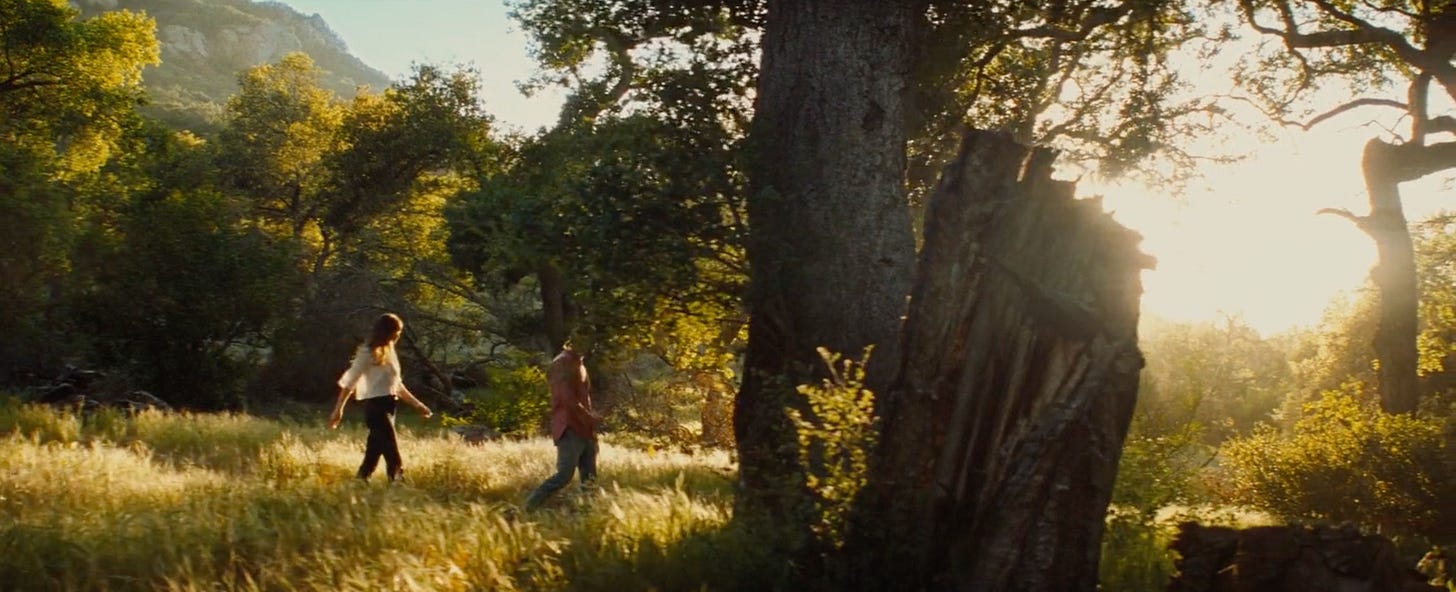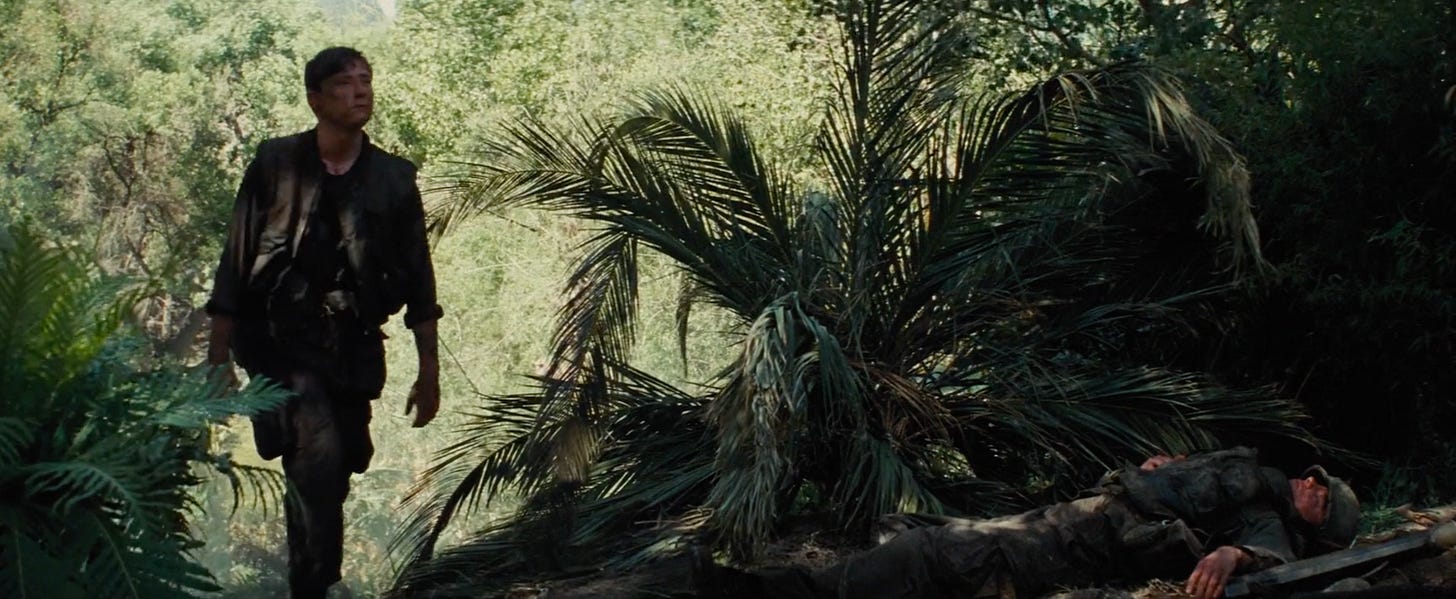Hollywood Picnics Ep.1 -The Bad Times at the El Royale: Where Hollywood & Leisure Intersect and Trouble Resides
Tracking down the history and locations with Location Manager, Scott Trimble.
You can read more about Scott’s work here: https://www.extremophiles.com/
Ever since starting my page I was hopeful to connect with people in my industry. Especially those that could reveal some of the incredible secrets about the films we see on the big screen. So when I initially reached out to Scott Trimble who has a special connection to the film I’m about to introduce, I was thrilled to see Scott actually respond. Scott is the location manager and scout for the California portion of the film The Bad Times at the El Royale. His work is an incredible catalog of diverse and incredible films; From 50 First Dates to The Mandalorian and more.
Through research I realized that the hotel featured in this film is actually real and has a captivating history. For those of you haven’t seen it, centers around six strangers at a hotel stranded on a rainy night. Each have their own hidden backstory which ties them to the hotel. The players are: A “carpet salesman” played by sixties aficionado Jon Hamm, a sultry, feisty Dakota Johnson plays Emily Summerspring, a Motown singer, Darlene Sweet played by Cynthia Erivo, Jeff Bridges who plays Father Flynn and our lobby boy Miles Miller played by the dynamic Lewis Pullman. Without revealing too much more, there is a cult, a mysterious loot and a murder mystery. It makes for a thrilling ride that undoubtedly keeps you hooked. With a stellar cast and killer soundtrack, you will love this film. What makes Bad Times so appealing isn’t just these elements but the fact that it blurs real life with fiction. There are call backs to old Hollywood, JFK, The Rat Pack and a Charles Manson like figure played by the incredibly ripped Chris Hemsworth. The balance of the warm "Summer of Love” of the seventies and the cold oppressive reality of the 50s/60s makes this an enticing ride.
Although the film doesn’t outright mention Charles Manson, there are distinct similarities; There is a news broadcast that Darlene catches which mentions a murder of a “notable business man in Malibu.” In real life: the first Manson family murder took place in Topanga, a few miles from Malibu, at the Malibu Feed Bin at the corner of PCH and Topanga Canyon. The victim was Gary Hinman, a friend of the Manson family—who was tortured and ultimately murdered because Manson believed he had money.
The sinister Manson like cult approaching the hotel are marked by these hardly noticeable moments that interrupt the events inside in the hotel. Much like real life, the Manson family committed quite a few crimes before police caught up to them, and many crimes still remain cold. In fact, Manson and his crew were all over Southern California. They made good use of Spahn Ranch, an old movie ranch which appears in Quentin Tarantino’s Once Upon A Time In Hollywood that came out the following year in 2019. Their reign of terror effectively ended the night they killed Sharon Stone, but also took with it the free spirit attitude we adopted following the Vietnam War.
Although the Manson cult never had associations with the Nevada based hotel like in the movie, the introduction of these figures into the story inspirit the grayish morality borderline that can occur with people in the fringes of society. War, poverty, desperation, sickness and love can create killers out of all of us. In this film, these lost souls can either turn to a life of dedicated lonerism like the guests of the “El Royale” or commit to a darker side.
Godard manages to capture the fascination we have for bygone Americana and he calls back to these iconic locations of yesterday. Travel lodges like the El Royale made exploring so-cal feel luxurious and exciting. In real life, The Cal-Neva was one of the most highly desired and stayed at hotels in the 1930s-1960s, and the location the film is based on.
The Cal-Neva was one of the first casinos in Tahoe and a Hollywood favorite. The IT girls, Clara Bow and Marilyn Monroe escaped to the California/Nevada location to escape the prying eyes of the paparazzi and indulge in their vices. The film makes good use of this real life state line divide; on one side you can enjoy the California- sunshine and the company of Hollywood stars and on the other side; Nevada- a gambling and poker haven for stars and millionaires looking to double their luck.
As Miles, the front desk attendant puts it:
“Warmth and sunshine to the west or hope and opportunity to the east”.
One of the characters in the film, explains that the “El Royale” was THE place in 1966. He even mentions Dean Martin. In reality, Dean and the Rat Pack were pictured at the hotel along with a great many actors and actresses including the late, great Marilyn because it was Frank Sinatra who owned it at one point. The Cal-Neva is the place that Marilyn spends the last few days of her life before dying in her Brentwood home. Her last photos alive, were taken at the Cal-Neva, found below.
In its early history, the Cal-Neva was one of California’s well-kept secrets among Hollywood royalty. Much like the rest of Hollywood, its history holds a dark past. When it was first built in the 20s, it cost a fortune, bankrupted its first owner, and burnt down within its first years. It was rebuilt and bought by an industrial tycoon who made it home to secret gambling games.
One of these games, involved Clara Bow accidentally either gambling the wrong chips or gambling poorly. She never ended up paying her debt that night and fled back to LA. The gambling boss at the time, Jim Mckay didn’t let this debt go and published her wrongdoing in the newspapers. The gossip columns had a field day. This boss comes to life is Babylon (2022). For anyone who knows me, I have a sickly obsession with this film.
Clara supposedly ended up gambling chips that she thought were worth 50 cents but in reality were each worth $100. Below, a newspaper clipping details the real event from September 26, 1930.
In the film Babylon, (spoiler alert) the event is dramatized to a climactic end where Nellie La Roy aka Margot Robbie’s character meets her demise due to this very event.
Clara in real life, was actually bailed out by Will Rogers, a famed actor and vaudevillian performer who came to fame in the early 1900s and amassed a fortune in land, horses, and money. At one point he was the highest-paid actor in Hollywood.
“Since she got into pictures by winning a magazine beauty contest, Clara Bow has amused her public and annoyed her employers by a series of personal imbroglios. Last week the proprietors of Calneva (Nev.) Lodge tried without any luck to cash checks of hers for $13,500, which she had left to pay gambling losses. She had been there, they said, with Will Rogers, Marie Dressier and Actor Rex Bell. While Miss Bow was denying she had gambled, Will Rogers, onetime Mayor of Beverly Hills, where gambling is forbidden, said: "I don't suppose it's going to hurt my reputation much for people to know I've been in a gambling house. Clara wasn't gambling much while I was there. Her boyfriend Rex Bell is a real nice fellow. They had dinner with me and I paid the check. You can eat as well as gamble in that hotel. It's quite a place. Maybe I sort of introduced Clara, but I don't think so; it would have been like introducing Her bert Hoover to the Senate. Everyone knew her."
Said Clara Bow: "I was gypped. I played a little game called blackjack. I thought the chips were for 50¢. They were for $100. Anyway, my lawyer told me you can't collect a gambling debt in Nevada."”
The El Royale, isn’t all so innocent itself though. The hotel has a feature not many of that time do: a series of secret tunnels that run through it. These tunnels were used to transport alcohol in and out of the hotel when the prohibition rolled around. And while Frank was the owner, he used it to guide mob members without being seen. Before it shut down, the hotel used to offer tours through these tunnels explaining its history.
In the movie though, the tunnels connect to the back of the rooms which have double sided mirrors so that high profile guests could be spied on and filmed. Famous politicians, actors, and general weirdos were under the thumb of the El Royale’s ownership with these blackmail items.
Although the Cal-Neva still stands, it is in the middle of a renovation/ revamp that has been going on for years.
The hotel was recreated on a stage in Burnaby, Canada pictured below where the movie was filmed.
Now back to Scott-
History has shown us that with some fine oratory skills and some crazy-looking eyes you can get away with A. LOT. Manson was not an attractive man nor was he warm, friendly, or approachable. But he strung some words together to convince a group of destiny-aligned psychopaths to kill innocent women, men, and a child. Godard’s decision to make the cult leader a smoking hot 6’5 Chris Hemsworth is incredibly daring as we ourselves are open to the idea of being seduced by Billy Lee and his teachings. His introduction is laced with a gorgeous color palette of warm tones. These locations specifically for our “California” portion of the film must express some sort of charisma that aligns with the vibrational frequency Billy Lee emits.
The yellow field of flowers, the clear blue sky, and the barren chest of Billy immediately intoxicates us.
We are introduced to Billy in a flashback sequence of Emily Summerspring (Dakota Johnson) looking to join the cult to be closer to/ rescue her sister. His entrance marks a shift in the story, whereas everyone was originally transfixed on the secret passageways of the hotel and Doc getting his money we are now focused on who is Billy Lee and his connection to the Summerspring sisters. This is where I bring in Scott!
LOCATIONS
NEWHALL LAND AND FARMING COMPANY/ INDIAN DUNES
Billy Lee’s entrance is marked by the vibrant, sunny, and inviting landscape of Los Angeles. We meet him walking through a flower field on the Newhall land and farm which Scott explains:
“It spreads from Stevenson Ranch from and up towards Del Valle. But we were specifically at a part of Newhall Land & Farming called Indian Dunes. Indian Dunes actually has some cinematic history. It used to be a motorcycle park. You go there with your motorcycle and you can jump over dunes and basically play as Evil Knievel for the day.”
Scott:
“Nowadays, it's all been mostly plowed flat. Back in the day when it was Indian Dunes, they filmed The Rocketeer, Twilight Zone, and Dukes of Hazzard. But the interesting thing to note about the field is that all those yellow flowers that you saw in the movie were fake- Every single one of them. The greens were real, but because nothing was in bloom that time of year, they had to bring in thousands of flowers. They had guys working for days putting on those fake plastic flowers.”
“History didn’t have anything to do with choosing the field, and the field is one of a hundreds of fields all over the place that are all nondescript on their own. I think we only chose that spot because of the hills in the background and the logistics and proximity to other places.”
Digging into the history of Indian Dunes, it is true it was used for recreational sport and motocross, which started in the 60s until the 80s. There were concerns of insurance liability, so they shut down the area and used it for filming. After that it was primarily reserved for farming and filming until the 1990s when an article in the LA times wrote about the Indian Dunes shutting down part of its fields for farming production. Due to an increase in desire for crops. Many production folk believed it would be developed on, losing its incredible expanse for profit, but as of now it remains flat and farmed.
MCGRATH BEACH
Moving onto our next location, the beach scene. There is a scene that comes later on in the film which shows how Billy Lee met the summer spring sisters. It was Rose, who was sitting on the beach as Billy Lee approaches her. The beach scenes are a task for any location manager’s duty. When finding a good beach, things like distance and accessibility are considered but most importantly in this case- the look and privacy. Dealing with a star like Chris Hemsworth, you have to find a beach that is private so that he is afforded some privacy. All beaches in California are public, so finding a secluded type beach is quite a challenge!
Scott:
“That one is McGrath State Beach, which is right by the city of Oxnard. And if you go into the motor home campground area, there's a path that leads straight out to the sand, and that's where we shot it. You know that that's out of the 30-mile zone. Which is unusual. Like, why would they do that? One reason is because of privacy, because if we had Chris Hemsworth at Zuma Beach. Everybody's gonna bother him. McGrath, nobody's ever over there, except for a few campgrounds. So one was privacy and the other reason was just convenience because a lot of the other locations were further out the 126.”
THE PROCESS
I wanted to ask you about the process of working in locations. Are you always solo in the field? Are you working with a group?
Scott:
“It depends on the project really, sometime I’m working by myself, but when I did Star Trek: Picard, I had 18 people in my department, just doing locations. On Bad Times, I had a total of four people doing locations. I did all the scouting, I had three people to do set work and logistics because we were spread out from Ventura to Acton.”
HIDDEN VALLEY: JMJ MOVIE RANCH
Scott also mentions a deleted scene that never came to fruition involving a scene where Billy Lee talks to a girl up in an oak tree. This scene was filmed at a ranch in Hidden Valley. The ranch is called JMJ movie ranch and was a prominent filming location since the 50s. The ranch boasted over 300 acres, a 1940’s red barn, a ranch house, a porch, and stable with a covered arena and forest area in the back. You can see photos of the property here, when it last listed for 20 million dollars.
One of my favorite shows Dallas and Dynasty were shot at JMJ in the 70s-80s.
For anyone slightly familiar with westerns, they will know that if there was a ranch around in the 50s, and was open to filming it most likely appeared in more than one western. There are hundreds of westerns!
According to my research, it is now known as the “FOUR T RANCH” which Scott says are not open to filming as the previous owners were.
It is very interesting to imagine Los Angeles a completely urban city is surrounded by endless possibilities with ranches, beaches, deserts and more. These multi acred ranches still thrive today and is where the movie industry started.
RAVENNA/ACTON: PULSAROSA MOVIE RANCH
We find ourselves in a different location when Miles, the front desk attendant for the El Royale, is struggling with his PTSD. Through a flashback we are transported to Vietnam, where Miles endures a terrifying battle scene the leaves him the only person alive left out of his battalion.
Scott:
“The good thing about Polsa Rosa Ranch is that the property is almost exclusively just for filming. They have had hundreds of movies that have shot there. So it's their business, the family that owns the property lives there and rent out these acres for movie shoots almost constantly.”
When I called the location myself to confirm this location, they actually informed me that they were closed for ecological surveying which disrupted their movie shoot schedule for two weeks.
I’ve heard through the grapevine as well there is one particular neighbor who is a lawyer that makes it harder for them to get the permits and make an obstacle for productions to come. These instances of neighbors causing obstacles is all too familiar to some of our most beloved movie locations. Most of the time, its either jealousy,
The scene that takes place here is the Vietnam war flash back which Miles (Lewis Pullman) experiences.
Scott:
“They had actually gone to Thailand to try and recreate the scene there because the trees, terrain are very similar. But then at some point they decided against it. That was one of my first tasks was trying to figure out where we can do a Vietnam battle. We considered places with palm trees, and greenery but that became harder in itself”.
Although Pulsa Rosa was chosen as the best location for this scene, it’s terrain did not interpret as tropical, so Scott tells me greens had to brought in to create that Vietnam looking landscape: “We went to Polsa Rosa, which is desert and rugged terrain, but we brought in 900 trees in pots.”
Dressing terrain in greens is somewhat common, but usually reserved for high budget features or commercials. This was an incredible accomplishment by both locations and greens people.
WRAP
What an incredible ride across Southern California for the amazing movie. Thank you to Scott for revealing the beautiful locations pulled off for this film.
To end, I asked Scott about his beginnings- his birthplace is the Bay Area and attended UC Berkeley. He started a website, in 1997, “Film in America”. He would print the pages of screenshots and try to track down the location in his area. His start was tracking down Buster Keaton and Charlie Chaplin films. A true cinephile.
Like me, Scott enjoys tracking down locations from his films and is an active person enjoying trails and hikes. His resume attests to this as well- with an extensive and consistent work history, you have to be in great shape.
Scott was also generous enough to tell me about his experience working with JJ Abrams, and was able to find 85% of the locations for the Star Trek films, which called back to his Trekkie roots. He also scouted Utah and Alaska for the film, however it always comes back to California.
Although we both agreed California is the most sought after location, Vancouver, Toronto, London, Sydney and Atlanta are the top destinations that offer good tax incentives. However, the roots of actors, producers and studios are here which would take several generations to move.
My note is, although not completely imaginary we are seeing the effects of FilmLA and permitting processes taking hold of production companies desire to stay here. Making it impossible with fees, permissions, and bureaucratic obstacles that make LA undesirable and costly. Then there are the neighborhood councils, unhappy neighbors, and the occasional CHP requirements that make it a tough ride. I hope this all changes so that LA can remain the iconic filming destination it always was.
Thank you for reading and Thank you to Scott for talking with me!

